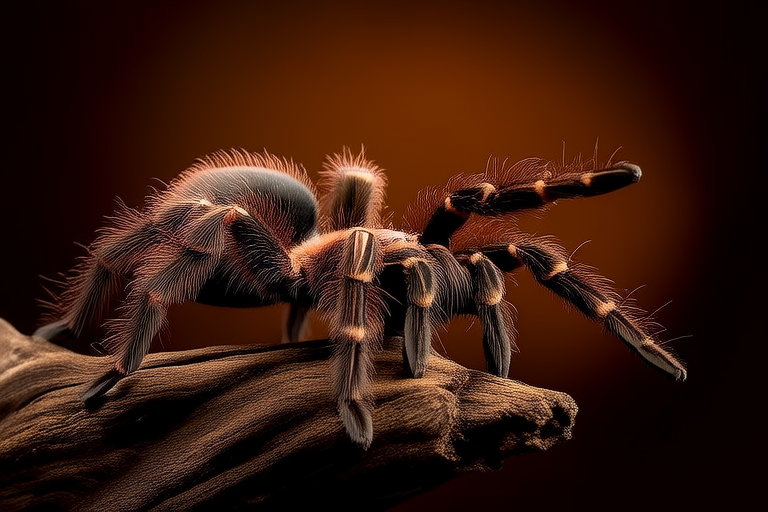From Fear to Fascination: How I Became Obsessed with Tarantulas
When most people think of tarantulas, they envision large, hairy spiders with fangs dripping venom, ready to strike at any moment. This was my perception as well. Growing up, I had always been terrified of these creatures. The idea of encountering one sent shivers down my spine. My fear was fueled by countless horror movies and exaggerated tales from friends, all painting tarantulas as terrifying monsters lurking in dark corners. I believed that their bites were fatal, and that they would attack humans without provocation. These misconceptions were deeply ingrained in my mind, making it difficult for me to see past the fear.
One evening, I was hiking through a dense forest near my hometown. The air was thick with humidity, and the sound of rustling leaves filled the silence. As I walked along the trail, I noticed something unusual on the ground – a small, fuzzy creature scurrying away from my feet. At first, I thought it was a mouse or some other rodent. But as I squinted to get a better look, I realized it was a tarantula. My heart raced, and I instinctively took a step back. However, instead of running away like I expected, the tarantula simply continued its slow, deliberate pace. It was then that I began to question everything I thought I knew about these misunderstood arachnids.
The encounter sparked a curiosity within me that I couldn’t ignore. I started researching tarantulas online and discovered that many of the myths surrounding them were unfounded. For example, contrary to popular belief, tarantulas do not seek out humans to bite. They prefer to avoid confrontation and will only defend themselves if threatened. Additionally, while their venom can be painful, it is rarely dangerous to humans. In fact, some species’ venom has even been used in medical research due to its potential pain-relieving properties. Another surprising fact is that tarantulas play a crucial role in maintaining ecological balance. They help control insect populations, acting as natural pest controllers. Their diet consists mainly of insects, but some larger species may also prey on small vertebrates like lizards and frogs.
As I delved deeper into my research, I became increasingly fascinated by the unique characteristics of tarantulas. One particularly interesting aspect is their method of defense. Many tarantulas possess specialized hairs on their abdomen called urticating hairs. When threatened, they flick these hairs off their bodies, causing irritation and discomfort to predators. Some species, such as the Brazilian salmon pink, have even been observed using these hairs to create a web-like barrier around their burrows for added protection. Another remarkable feature is their ability to regenerate lost limbs. If a tarantula loses a leg, it can regrow it over time, although the new limb may be smaller than the original.
My newfound fascination with tarantulas led me to attend a local wildlife expo where I had the opportunity to meet and interact with several species of tarantulas up close. One particular encounter stands out in my memory. A handler brought out a Chilean rose tarantula, known for its docile nature and vibrant coloration. She allowed me to gently hold the tarantula, which felt surprisingly soft and delicate despite its intimidating appearance. As I held it, I marveled at its intricate patterns and the way it moved with such grace. This experience further solidified my shift from fear to fascination. It was during this moment that I realized how much I had been missing out on by allowing my fear to dictate my perception of these creatures.
Since then, my obsession with tarantulas has only grown stronger. I have joined online communities dedicated to spider enthusiasts, where I can share knowledge and learn from others who share my passion. I have also begun keeping tarantulas as pets, carefully selecting species that are suitable for beginners. My current collection includes a Mexican redknee tarantula and a Chilean rose tarantula. Caring for these creatures has taught me patience and responsibility. Each day, I observe their behavior, monitor their health, and ensure they have everything they need to thrive. Through this process, I have gained a deeper understanding of their needs and preferences, which has enhanced my appreciation for these fascinating animals.
The transformation from fear to fascination has had a profound impact on my life. Not only have I overcome my irrational fear of tarantulas, but I have also developed a greater sense of empathy and respect for all living beings. This experience has shown me that it’s important to approach unfamiliar situations with an open mind and a willingness to learn. By doing so, we can often discover beauty and wonder in places we least expect.
If you’re someone who shares my former fear of tarantulas, I encourage you to take a step back and reconsider your perception. Start by educating yourself about these creatures and their behaviors. Attend events or visit exhibits where you can safely observe them up close. Remember that tarantulas are not aggressive predators looking for trouble; rather, they are complex organisms with unique adaptations that allow them to survive in their environments. With time and effort, you too may find yourself captivated by the allure of these magnificent arachnids.
